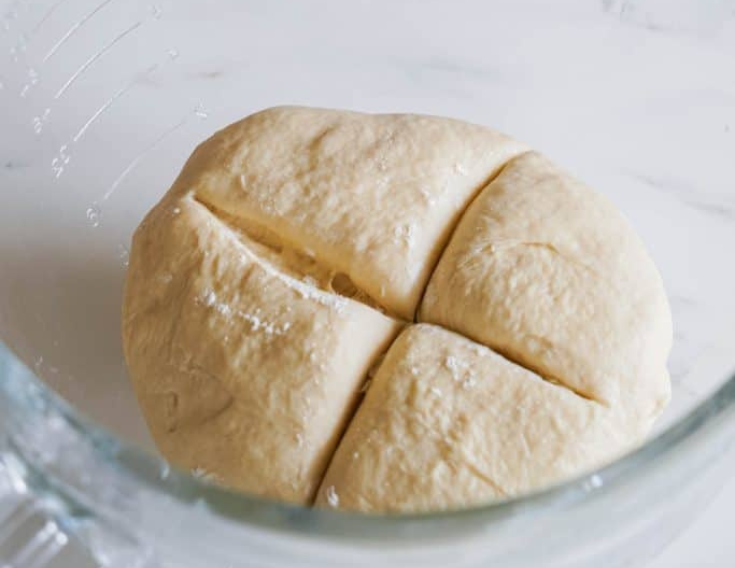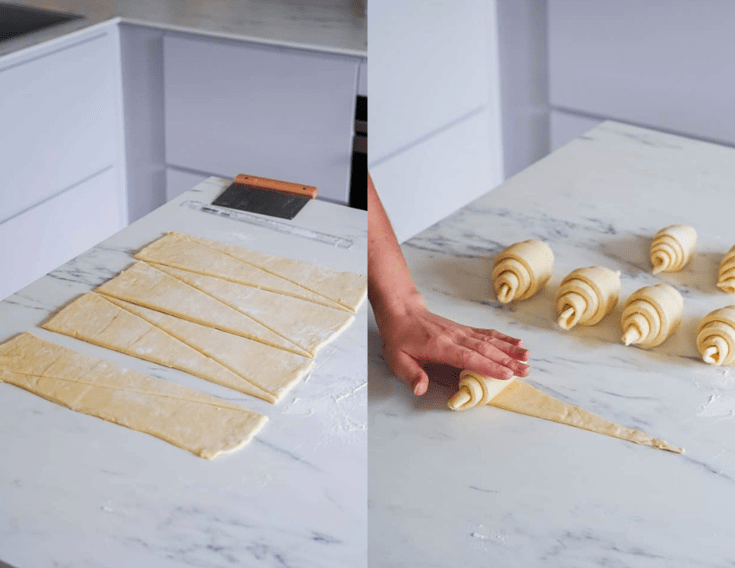Servings 6
- Amount Per Serving
- % Daily Value *
- Total Fat 23g36%
- Saturated Fat 14g70%
- Cholesterol 61mg21%
- Sodium 527mg22%
- Potassium 73mg3%
- Total Carbohydrate 37g13%
- Dietary Fiber 1g4%
- Sugars 2g
- Protein 5g10%
- Vitamin A 710 IU
- Calcium 28 mg
- Iron 2 mg
* Percent Daily Values are based on a 2,000 calorie diet. Your daily value may be higher or lower depending on your calorie needs.
Note
Ingredients and Preparation
- Quality Ingredients: Use high-quality butter, flour, and milk.
- Butter: European-style butter with higher fat content is ideal.
- Temperature Control: Keep ingredients and dough cool during preparation.
- Resting Time: Allow dough to rest in the refrigerator between folds.
Dough Lamination
- Laminating Process: Fold and roll the dough multiple times for thin layers.
- Butter Block: Ensure even distribution of the butter block.
- Folding Technique: Use the letter fold (three-fold) technique.
Shaping and Proofing
- Cutting the Dough: Cut into triangles with sharp edges.
- Shaping: Roll from the wide end to the tip, tucking the tip under.
- Proofing: Proof until the croissants have doubled in size.
Baking
- Egg Wash: Brush with an egg wash for a shiny, golden crust.
- Oven Temperature: Preheat to around 375°F (190°C).
- Baking Time: Bake until golden brown and crisp.
Storage and Serving
- Cooling: Cool on a wire rack to maintain crispness.
- Storage: Store in an airtight container at room temperature for up to two days, or freeze for longer storage.
- Serving Suggestions: Serve plain or with jam, honey, or chocolate spread.
Common Mistakes to Avoid
- Overproofing: Can cause croissants to collapse during baking.
- Underproofing: Results in a dense, doughy texture.
- Incorrect Butter Temperature: Too cold butter can break, too warm butter can melt into the dough.
Keywords:
All Recipes, French Croissants, Breakfast, Homemade, Bread, Brunch, Pastry, French
Did you make this recipe?
Tag @yumplatterofficial on Instagram and hashtag it #YumPlatterrecipes so we can see all your recipes.
Also Share this Recipe With Your Friends & Family
Pin this Recipe And Share it With Your Followers.
Also follow me on Pinterest @yumplatterofficial for recipe Updates
Thank you for printing this recipe from our website! We hope you enjoy creating delicious dishes in your kitchen. Remember, cooking is not just about ingredients it's about sharing love and creating memories.







